The Mystic
When I was little
My sacred space
Was a seat in the back
Of an old Toyota
On a Saturday morning
Loaded up with my Grampa,
Driving stick shift,
While strains of haunting melodies,
Blue notes and ragtime,
Floated out of
The old radio and mixed
With his stratchy hum
And a child’s off-pitch wail.
I remember my mosque
Was in the grass
Covered in dew,
Rolling down the hilltops
Before the storm,
And the wind
Tussling my long hair
And long dress
And the look of the clouds
As we waited
Waited for the rain
And in that moment
Of anticipation
I felt Allah in the wind.
When I was older
I learned about walls
About concrete
And about the feats
Of modern engineering
In the city
Where the grass was gray
But still I found religion
In the stucco slabs
And the tall glass windows
And the indoor plants
Where bamboo shoots rose
Tall as a tower
And called out to me:
Come pray.
Somehow it was religion
That brought me,
A small town girl with no
Particular relationship to God,
With no prophetic
Word to speak of
To the ancient halls
Surrounded by iron
Built out of red brick
Observed by the impartial
Eyes of a statue
Of a dead man
And first I felt trapped
I felt caged
I felt hollow
And then I found the dew drops
On the lawn at dusk
And I found that walls
Mattered not to God.
And it was in the basement—
Of a church no less—
No dome above me,
No light from a niche,
No platform from which
The Imam might speak
When I encountered the teachers
In the barest of places
Smoking cigarettes and carrying
Their lives on their backs
And asking for food
And before morning
Someone left a Qur’an
At the staff desk
And suddenly I knew
The direction
Of the Kaaba.
And while I know
I will find God
In the birds
And the city
And stuck in traffic,
I somehow know that
I must close my eyes
When the world gets dull
And the night drags
And something in me sleeps,
And then I can see
The miracle:
An old growth forest,
The line where the water ends
The ocean meets the sky
The cliff drops off
And I am a child
Sitting in the dew grass
Looking up at the sky
Admiring its endlessness.
I have been brought
This far.
The rest I must travel
On my own.
“The Mystic”
Week 13
Poetry
This poem, entitled “The Mystic,” draws not only from the final week of class but also from selected previous weeks and themes from throughout the course. It’s main inspiration, though, is from the penultimate lecture, Maryam Eskandari’s talk on sacred spaces.
Drawing from the in-class exercises, this poem emphasizes the individuality of sacred spaces. Rather than a prescription or blueprint for a sacred space, this poem explores the appearance of the sacred in more everyday situations, scattered throughout life.
The poem makes references to several standard symbols and architecture of the mosque, including minarets, domes, minbars, and the qibla. However, the poem emphasizes that none of these traditional symbols exist in the sacred space, or else describes them in a subversive form, as when shoots of bamboo replace minarets. The speaker even implies that the idea of sacred spaces having walls is, initially, foreign. This ties in to Maryam’s theme that mosques, and sacred spaces more generally, need not conform to preconceived notions.
Similarly, the musical tradition is also subverted. In “orthodox” Islam, music is not allowed in sacred spaces; however, Aidi’s discussion the empowering role of jazz in the Afro-Islamic tradition reveals the important and arguably sacred nature of music. Therefore I included components of jazz (“blue notes” and “ragtime”) in the first stanza of the poem, challenging preconceived notions of a sacred soundscape.
For me, the concept of a sacred space is also fundamentally rooted in a mystical experience of Islam. Much like the quote we heard in class—
“Knowledge is like a horse. It can lead you to the gate of the palace, but it cannot follow you inside.”
—I believe that tradition can contribute to feelings of sacredness, but only individual, intuitive knowledge can define sacredness. This is evidenced by the last stanza of the poem:
“I have been brought / This far. / The rest I must travel / On my own.”
With this in mind, I decided to take an artistic risk with this poem: I wrote this poem largely about my own life. My grandfather’s pickup truck (stanza 1), miscellaneous scenes from my childhood (2-3), Harvard (4), and Y2Y (5) are among the more sacred spaces in my personal history.
While I am not Muslim, I chose to write a very personal poem for three reasons. First, I wanted to emphasize the importance of individual intuitive knowledge in constructing a sacred space. Secondly, I sought to highlight the transcendental nature of sacredness, in which one can experience the sacred feelings associated with “islam” while not being Muslim. Finally, I wanted to show that the concepts from class have themselves managed to transcend religious boundaries, so that I as a non-Muslim have still gained something very personally relevant from our discussions of sacredness.


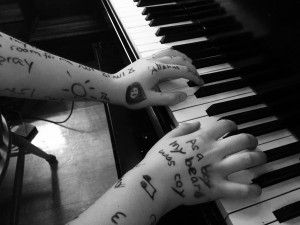

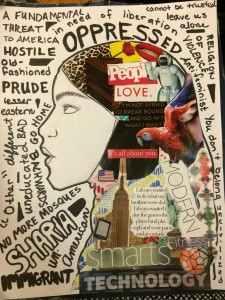

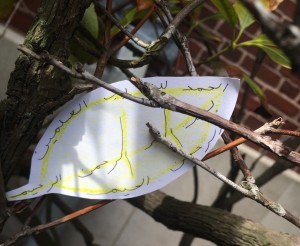
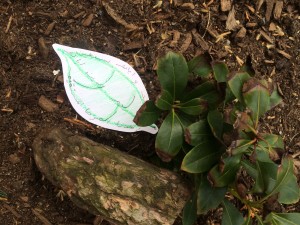
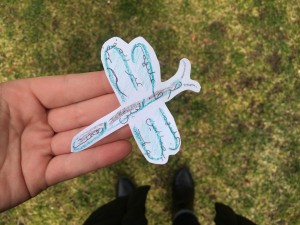
Recent Comments